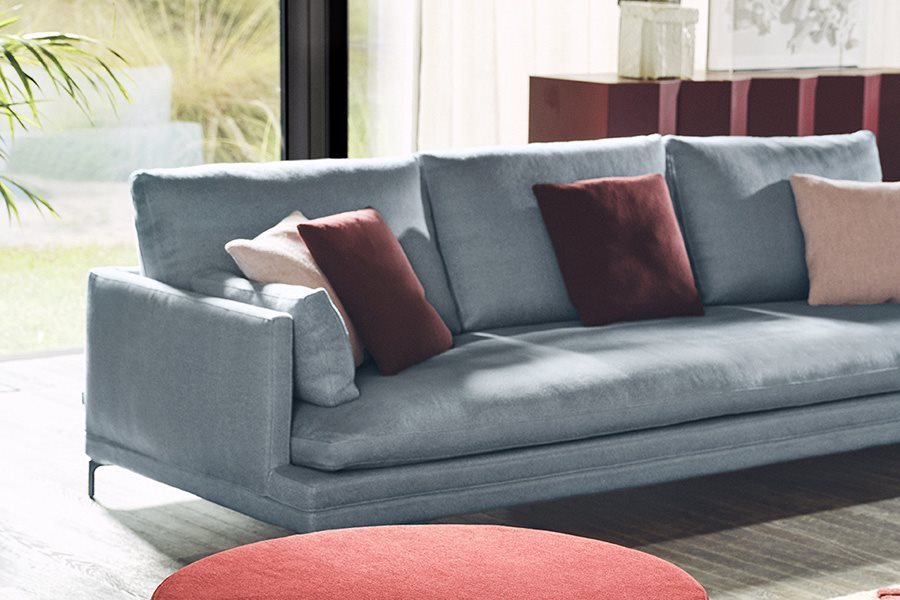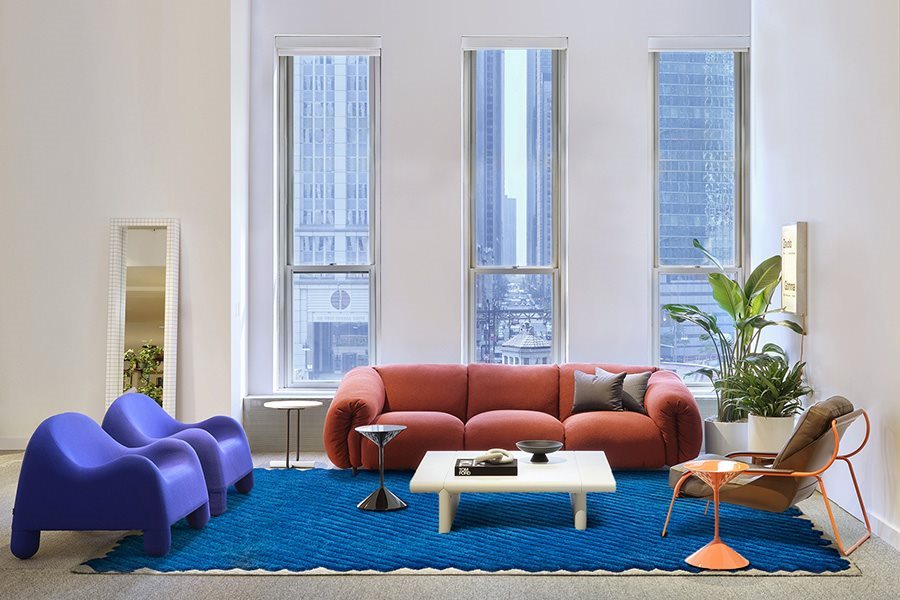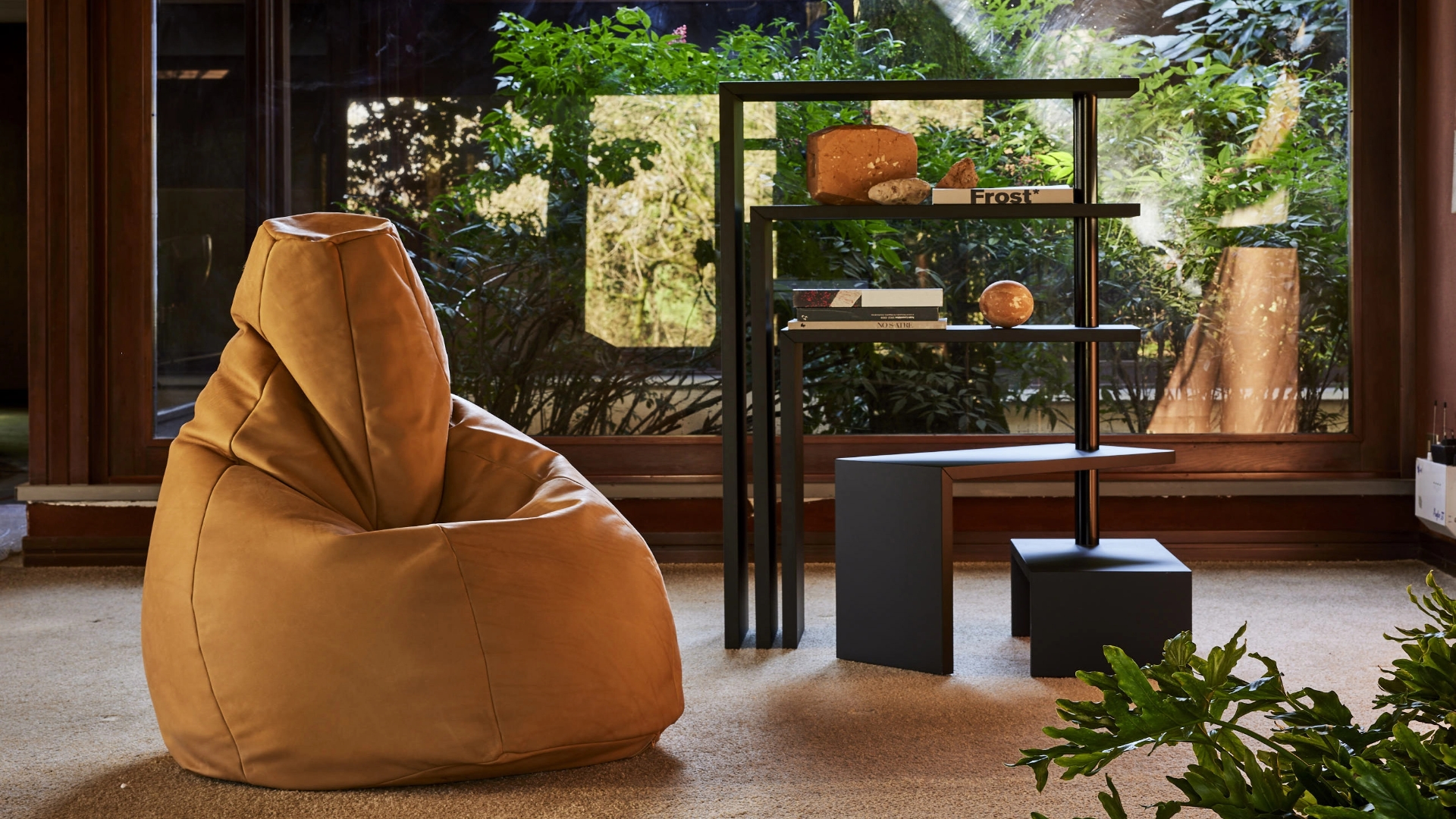Zanotta products, particularly the upholstered pieces, have always stood out for their exceptional comfort and strong performance in terms of sustainability. Sustainability lies at the core of the company’s philosophy, driving its investment in advanced technologies and pioneering materials to significantly reduce environmental impact.Among the innovations that clearly reflect Zanotta’s responsible approach, the introduction of removable covers for upholstered furniture stands out — a first in the furniture sector. This forward-thinking design choice helped reduce waste and extend the product’s lifespan. The ability to remove and replace the cover, and in some cases wash it depending on the fabric, not only allows for a refreshed aesthetic over time, but also makes it easier to care for the piece in a more conscious and sustainable way.
Three products embody this philosophy, combining innovative technologies, responsible material choices and a timeless aesthetic: Fedrigo, a 2025 debut designed by Vincent Van Duysen; William+, a reinterpretation of one of Zanotta’s bestsellers by Damian Williamson; and finally Za:Za Max by Zaven, the evolution of the Za:Za sofa, winner of the Compasso d’Oro in 2024.
Fedrigo, the result of a new collaboration between the brand and Belgian designer Vincent Van Duysen, is a modular system conceived to offer the highest standards of comfort, sustainability and durability. Generous volumes and an enveloping design – where backrest and armrests blend into a single fluid gesture – are combined with a structure developed in full compliance with disassembly regulations and the use of environmentally friendly materials.The sofa's supporting frame is made of plywood and hosts a sculpted form in Circullarrefoam® polyurethane, which contains a percentage of recycled polyols. These polyols are reintegrated into the formula used to produce the foam block, which is then shaped.The foam structure, combined with the plywood base, is wrapped in a recycled PET fibre cover, secured with polyester Velcro. The final upholstery, divided for practicality into seat and backrest/armrest sections, is also applied using Velcro. The absence of adhesives allows the product to be fully dismantled at the end of its life cycle, enabling the individual components to be recycled or reused.
This same balance of form and function is reflected in William+, the evolution of the iconic William sofa by Damian Williamson originally presented in 2010. This new version is deeper and even more comfortable, preserving the refined, essential aesthetic of the original design while introducing sustainability improvements that enhance performance without compromising its spirit. The steel frame is paired with a seat cushion in polyurethane foam of varying density and thermally bonded polyester fibre. The backrest and armrests are made from self-extinguishing moulded polyurethane foam with inserts in thermally bonded polyester fibre. The seat and backrest cushions contain spheres of regenerated and regenerable polyester, combined with inserts in polyurethane foam of different densities, offering calibrated and long-lasting support.The upholstery is fully removable and available in fabric or leather, while the feet are offered in polished aluminium alloy, satin-finished nickel or black lacquered finishes.
Completing this vision is Za:Za Max, designed by Zaven, it was created with the aim of radically rethinking the sustainability of upholstered furniture, placing recyclability and ease of disassembly at the heart of the project.The painted steel supporting frame – available in talc, hemp, orange, amaranth, grass green, espresso or black – is fitted with rigid anthracite polyester straps that provide a welcoming base for the cushions.The padding, featuring a non-removable inner cover in regenerated and regenerable polyester, ensures enveloping, calibrated comfort thanks to its dual-density composition: polyurethane in the lower or rear part of the cushion, and regenerated and regenerable polyester microspheres in the upper or front section. Both the microspheres and the cover are sourced from a supply chain using recycled materials, specifically PET from recovered bottles.Each padded element – seat, backrest and armrests – is placed in separate pockets and assembled without adhesives, ensuring material separation and facilitating end-of-life recovery. The fabric cover is fully removable and each element is secured to the frame using a series of snap fasteners.This year, the collection has been enriched with the addition of two poufs measuring 95x75x44 cm and 95x95x44 cm respectively, which join the double-seat pouf already in the catalogue (150x75x44 cm). Designed to complete the Za:Za Max system, the new pieces reflect the same aesthetic and structural features, offering an additional solution centred on comfort and sustainability.
Zanotta reaffirms its commitment to conscious design, where technical innovation, sustainability and comfort converge in furnishing solutions conceived to stand the test of time — a vision that looks to the future without compromising on quality and beauty: values that have always distinguished the brand.
Photo credits: Luca Caizzi
.png)
.jpg)


